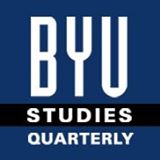BYU Studies

Keywords
Mormon studies, Russia, Mormon communities
Abstract
When Mormon missionaries entered Russia in 1990, they were astonished to hear about "Mormon" settlements already existing in the Samara region. Other evidence of Mormonism appeared: for example, locals used the term "Mormon crosses" to describe a unique style of crucifixes in cemeteries. In this article, the authors delve into the questions of whether or not sects with ties to mainstream Mormonism existed in pre-perestroika Russia or if unrelated groups earned the nickname "Mormon" for living in unusual family arrangements, similar to polygamy. Using data gathered from Latter-day Saint missionaries who served in Russia in the late 1990s as a start, the authors spent the summer of 2000 in Russia searching through archives and interviewing locals, aiming to discover if pre-1990 Latter-day Saint missionaries, the spread of Church literature, or migration could have produced a body of believers in Russia with legitimate ties to the Salt Lake church. The authors conclude that the use of the word "Mormon" is more likely a misnomer. They write, "The borrowing of a term inspired by popular stereotypes of marginal religious groups rather than the clandestine expansion and rediscovery of a lost branch of Latter-day Saint religion best explains the ongoing use of the term Mormon to refer to Russians who are not members of The Church of Jesus Christ of Latter-day Saints."
Recommended Citation
Eliason, Eric A. and Browning, Gary
(2001)
"Russia's Other "Mormons": Their Origins and Relationship to The Church of Jesus Christ of Latter-day Saints,"
BYU Studies: Vol. 40:
Iss.
1, Article 2.
Available at:
https://scholarsarchive.byu.edu/byusq/vol40/iss1/2
